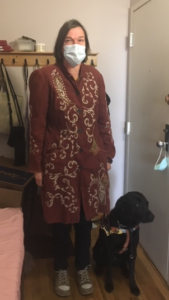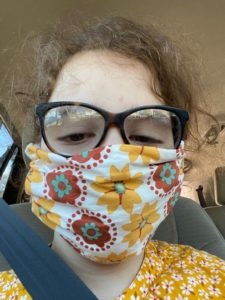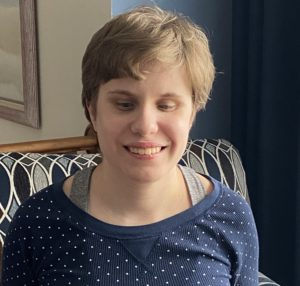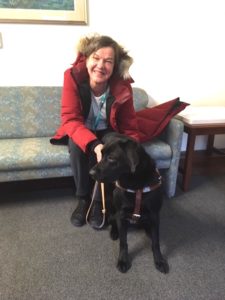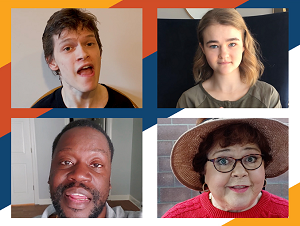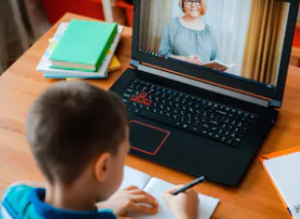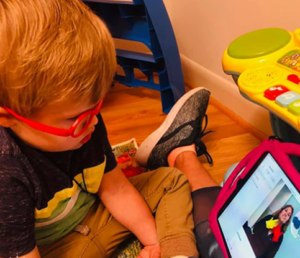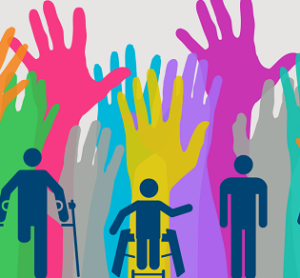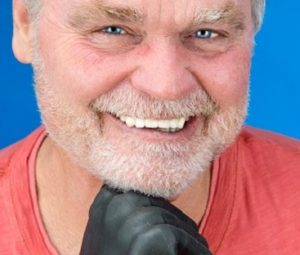Navigating Teletherapy During COVID-19
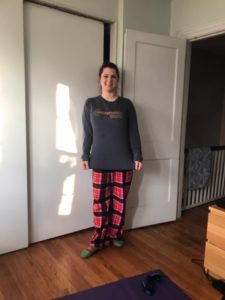 Everyone is impacted by this pandemic in different ways. Easterseals staff, therapists, educators, and volunteers are doing all they can to continue needed services in new and innovative ways through technology. However, the task can present its own set of challenges. I’m pleased to share this personal account from Adrienne Krysiuk who is an occupational therapist at Easterseals of Southeastern Pennsylvania.
Everyone is impacted by this pandemic in different ways. Easterseals staff, therapists, educators, and volunteers are doing all they can to continue needed services in new and innovative ways through technology. However, the task can present its own set of challenges. I’m pleased to share this personal account from Adrienne Krysiuk who is an occupational therapist at Easterseals of Southeastern Pennsylvania.
—
On my first day of work, I was super excited to see my kiddos. It had been a few weeks since I saw them last. I was also super nervous and anxious about doing teletherapy.
A question I kept asking included: How was I going to manage a caseload of 17+ kids and manage my own five year old?
But most importantly, I could not understand how I was going to effectively provide occupational therapy intervention with preschoolers who have Autism Spectrum Disorder through a little screen.
The 2019-2020 school year already had its own set of challenges, but all of us struggled to figure out how do this type of hands-off interaction with our Easterseals kids through a virtual platform. As we reflected, the slew of emails arrived and we really started to panic. We all started going to online trainings, reading blogs and asking questions, conducted team meetings and practice runs with our colleagues. We all became computer experts on Zoom and GoToMeeting. We connected with colleagues and families throughout the day, sitting and chatting for longer than any of us are used to. Then we became the minority of people who were still part of the workforce.
Since practicing teletherapy for a few weeks now, I am still trying to manage a hectic schedule between work and family. My son, at this moment, is trying to lay low because he knows he is getting away with watching too much TV and no one has been after him to do his school work for awhile.
The overall challenge of teletherapy has been a good learning experience and now familiar. In fact, at this point in time, I am a proponent of teleintervention and I feel this could be offered as part of the IEP plan. Of course, I would rather be working directly with my kids and coworkers, but we (the school team) have always discussed how beneficial it would be to have a better way to follow up at home. When you are working on certain skills, such as managing challenging behaviors or carrying over potty training, it would be very helpful to coach the parent more directly in the child’s home environment in order to bridge the gap between home and school and further support our kiddos’ success. This unfortunate pandemic event has been that opportunity, possibly causing positive change and providing more options and choices for our families.
Again, while looking on the bright side through this unique time, I also find myself appreciating the small things that helped me get through the day. One benefit I enjoy, and I know many people share this with me, is illustrated in the picture. I cannot complain about the reduction of my now nonexistent commute, being able to get ready for work in 15 minutes or even caring if my comfy uniform matches or represents the correct season. I’m dressed in my Easterseals teletherapy uniform.
To say the least, it has been an adjustment period for the parents too and I give a shout out to all of our special needs parents out there. We see you and you are doing a great job, so hang in there! We got your back.







